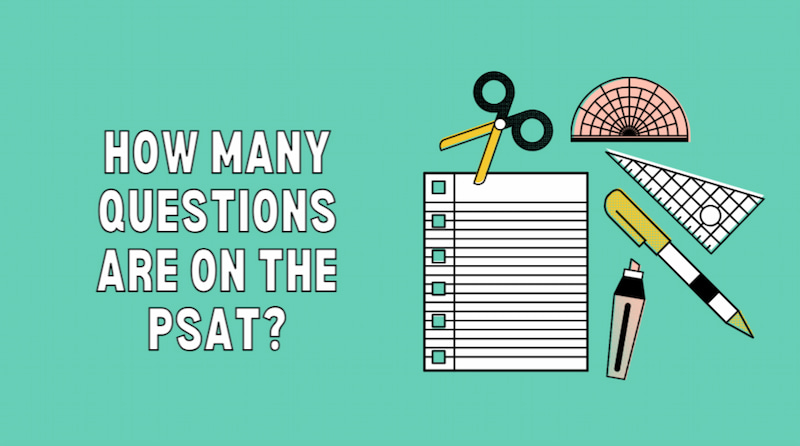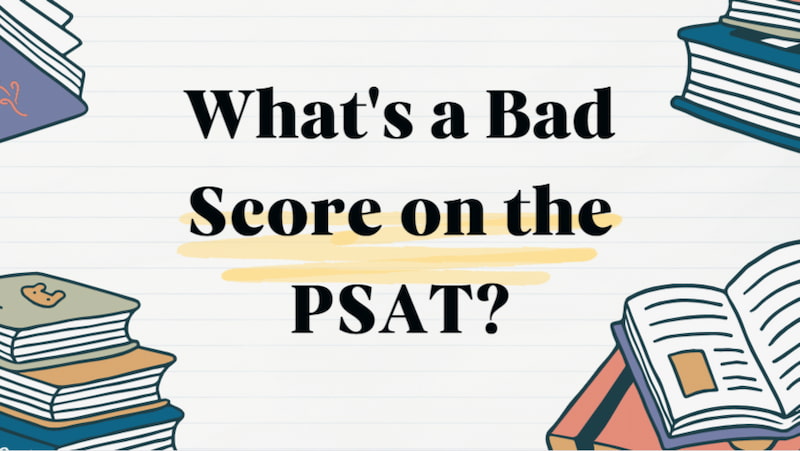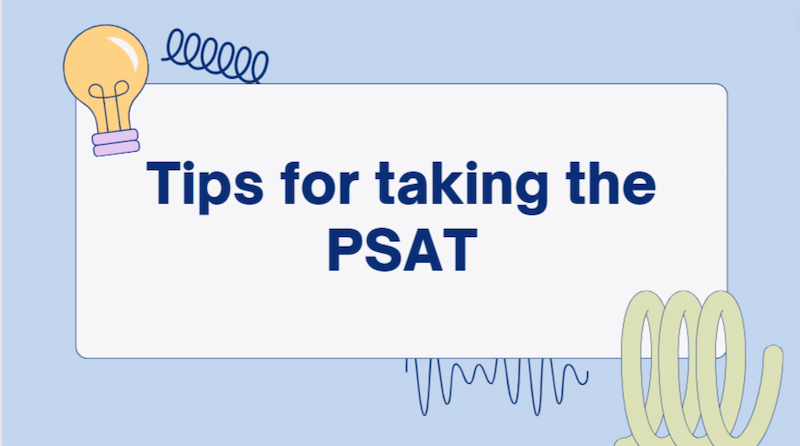The PSAT, which comes before the SAT, is more than just a practice test for one of the most significant exams high school students will take. It’s also a requirement for the famous National Merit Scholarship and a test of how ready a student is for school. Comprising Math and Evidence-Based Reading and Writing (EBRW) sections, the PSAT scores are a litmus test for future SAT scores and scholarship opportunities.
But what grades should students try to get and stay away from? What do these numbers mean in terms of getting into college and getting good grades? This article goes into detail about the PSAT’s scoring method, making it clear what a “good” or “bad” rating really means and showing how to get National Merit accolades.
PSAT Sections and Scoring Scale
The scoring system and what a good or bad is are very important things to know when you are studying for the PSAT. The PSAT/NMSQT is a preliminary version of the SAT and serves as a practice for students, as well as a qualifying test for the National Merit Scholarship. The PSAT is divided into two main sections: Math, and Evidence-Based Reading and Writing (EBRW).
A bad score on the PSAT would be one that falls significantly below the median. The 50th percentile, the median score, represents the average rating of 1000-1010. Scores below this range could be considered below average, or bad, although this term is subjective since the PSAT is primarily a practice exam.
On the other end of the scale, a perfect PSAT score would be at the top end of the range in the 99th+ percentile, which is between 1490-1520. It’s essential to note that unlike the PSAT, the LSAT, which is an entirely different exam used for law school admissions, also has a scoring scale that students aim to achieve a perfect mark on. We have articles that cover how to approach achieving a perfect LSAT score in depth.
To give you a clear picture of the PSAT scoring scale, let’s look at the table below which outlines the percentiles in relation to the PSAT scores:
| Percentile |
Total Score |
Math Score |
EBRW Score |
| 99+ |
1490-1520 |
760 |
750-760 |
| 99 |
1460-1480 |
750 |
730-740 |
| 95 |
1360-1370 |
690-700 |
690 |
| 90 |
1280 |
640 |
650-660 |
| 85 |
1230 |
610 |
630 |
| 80 |
1190 |
580-590 |
610 |
| 75 (good) |
1150 |
570 |
590 |
| 50 (median) |
1000-1010 |
490 |
510 |
These numbers tell you where you stand among test-takers across the country. If you want to get into competitive programs or win scholarships that use PSAT results, you might want to aim for the 90th percentile or higher.
Understanding the scoring scale for the PSAT can help you set realistic goals and identify areas for improvement. Remember, the PSAT is a stepping stone to the SAT, and a low score simply indicates where you need to focus your studies. As for the LSAT, it’s a separate challenge altogether, and excellence in that arena requires a different preparation strategy, which we explore in our specialized articles on the topic.
PSAT Scores vs. SAT Scores
Taking standardized tests can be confusing, especially when trying to figure out the differences between PSAT and SAT scores. Both the Preliminary SAT (PSAT) and the Scholastic Assessment Test (SAT) evaluate students’ skills in Math and Evidence-Based Reading and Writing (EBRW). They do, however, have different purposes and score ranges, which can have a big effect on a student’s academic path.
The PSAT is often considered a practice test for the SAT but is also used to qualify students for the National Merit Scholarship Program. PSAT scores range from 160 to 760 for each section, with a total score range of 320 to 1520. Although there is no “passing” or “failing”, a PSAT bad result would be one that falls significantly below the average, indicating that a student may need to invest more in preparation for the SAT.
In contrast, the SAT score range extends from 200 to 800 per section, resulting in a cumulative score range of 400 to 1600. While it’s unusual to list an SAT score on a resume, exceptional performances can be highlighted in applications for scholarships and academic programs. Our articles explore the nuances of when and how to feature an SAT score on a resume.
The PSAT and SAT score ranges are shown below in a table:
| Section |
PSAT Score Range |
SAT Score Range |
| Reading and Writing |
160-760 |
200-800 |
| Math |
160-760 |
200-800 |
| TOTAL (R&W + Math) |
320-1520 |
400-1600 |
| Selection Index |
48-228 |
— |
Students can use this table to figure out how their PSAT scores compare to possible SAT scores. It’s essential to keep in mind that the Selection Index is only found on the PSAT and is used to determine eligibility for scholarships. It doesn’t appear on the SAT.
Do Colleges Care About Your PSAT Score?
Students can have many different ideas about the significance PSAT scores are for getting into college. The PSAT is mostly a practice test for the SAT and a factor in getting a grant, but it doesn’t have much of an effect on getting into college.
First and foremost, it’s essential to clarify that colleges do not typically use PSAT ratings as a metric for admission. The PSAT is considered a practice test for the SAT and is primarily used to identify candidates for the National Merit Scholarship. However, the answer is generally no concerning what happens if you get a bad score on the PSAT.
The purpose of the test is to help students figure out what they need to work on before they take the real test. People who are worried about getting a bad score on the PSAT can rest easy knowing that these scores are not sent to schools and do not hurt their chances of getting in.
The National Merit Scholarship Program & the PSAT
The National Merit Scholarship Program is a prestigious academic competition for recognition and scholarships that begins with the PSAT/NMSQT — Preliminary SAT/National Merit Scholarship Qualifying Test. High school students who take the PSAT enter the National Merit program, which can lead to scholarship opportunities based on their scores.
The top 50,000 PSAT scorers are recognized, and more than 10,000 of them get a share of over $47 million in grant funds. These grants are only for juniors who take the PSAT. 16,000 of these high results are named semifinalists, and another 15,000 go on to become finalists. 7,880 of these students end up getting college scholarships. In the same time, students often question what happens if they do not perform well on the PSAT. They often get merit awards from colleges.
Working with the best grad school consultant for students aiming beyond undergraduate studies can provide a roadmap for long-term academic success, including how to excel in standardized testing and build a competitive college application. Our articles feature insights from leading consultants who guide students through the intricacies of academic planning, including strategies to improve upon a PSAT score that falls short of expectations.
What PSAT Score Do You Need to Become a National Merit Scholarship Finalist?
The journey to becoming a National Merit Scholarship finalist begins with understanding the score requirements and how they are determined. The National Merit Scholarship Corporation (NMSC) utilizes the Selection Index, which is derived from the student’s scores on the Evidence-Based Reading and Writing (EBRW) and Math sections of the PSAT.
A student’s Selection Index score is calculated by doubling the sum of the points from the EBRW and Math sections, scaled between 8-38 as indicated in the PSAT Score Report, which then translates to a range of 48-228. To be considered for semifinalist status, students often need to achievein the 99th percentile among all test-takers in their respective state during that PSAT administration.
The mark required to become a National Merit semifinalist varies by state due to the preset number of semifinalist slots allocated to each state. For example, a student in California might need a Selection Index score of 220, while a student in West Virginia might require a score of 207 to reach semifinalist standing. These cutoff scores are dynamic and can change annually based on the performance of the test-taking cohort.
Achieving a high score on the PSAT is essential, as less than 1% of high school students advance to semifinalist status. It’s important to note that what is a bad score for PSAT is relative; while a lower benchmark might not meet the threshold for National Merit considerations, it can still provide valuable insights into areas for improvement.
Our articles tell you how to use these practice tests to your advantage and help you figure out what numbers you need to be eligible for the National Merit. Scholars are more likely to reach this key academic milestone if they consistently prepare and understand how scores work.
FAQ
What is a bad PSAT score?
A bad PSAT score would be one that falls significantly below the national average, typically in the bottom 25th percentile of test-takers. For perspective, rates lower than 920 might be considered below average, as the median level is around 1010 out of 1520.
Is a 450 PSAT score good?
No, a 450 is considered below average on the PSAT, as the test scores range from 320 to 1520.
What is the lowest PSAT score accepted?
The PSAT does not have an “accepted” score per se, as it’s primarily for practice; however, test results below 320 are in the lowest range.
Is 850 a bad PSAT score?
Yes, an 850 is below the average PSAT score range. However, it’s an opportunity to identify areas for improvement. For insights on what is a bad PSAT score and how to enhance your academic profile, check our articles.




